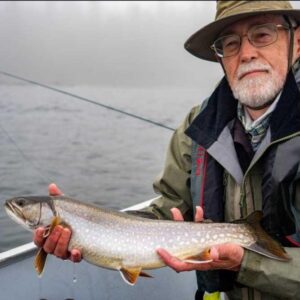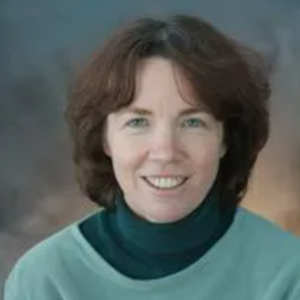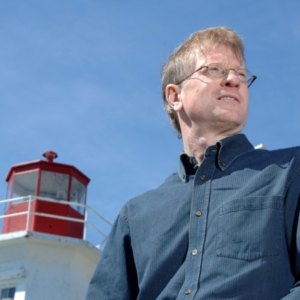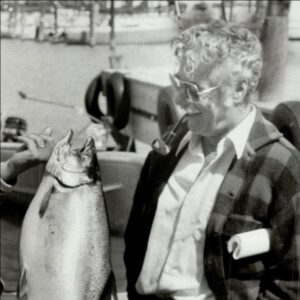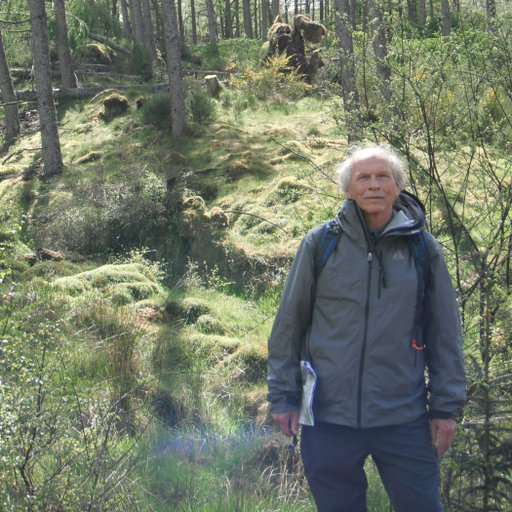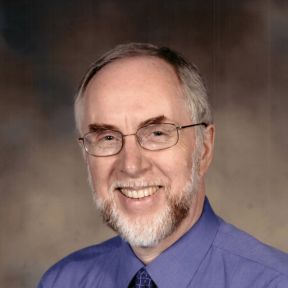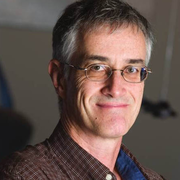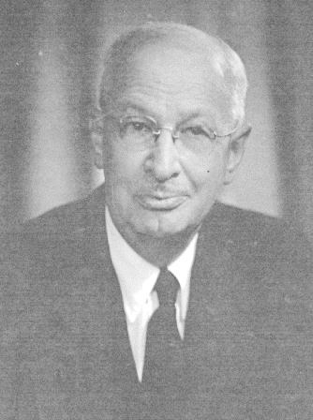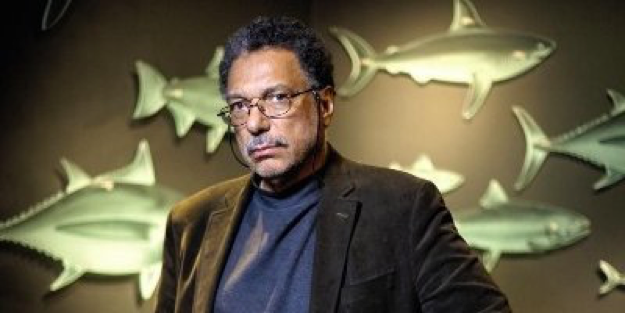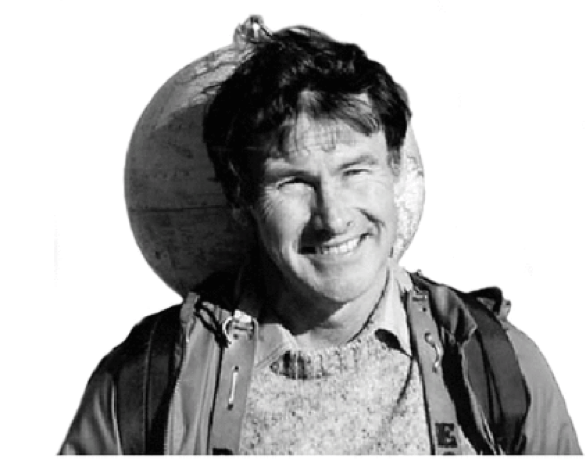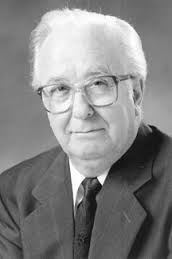Legends
Nominations for the 2024 Legends Award is now OPEN. Please send a brief bio of your nominee to Prof. Craig Purchase at cfpurchase@mun.ca by July 15. An online vote will be initiated in early August. All CARS members are eligible to vote, and unsuccessful nominees are carried forward.
LEGENDS OF CANADIAN FISHERIES SCIENCE AND MANAGEMENT
Canada has a long and illustrious history in fisheries science and management. Indeed, many scientific discoveries, assessment tools, and even contemporary management strategies can be attributed to Canadian fisheries professionals. In 2014, The Canadian Aquatic Resources Section of the American Fisheries Society has launched a new recognition program called “Legends of Canadian Fisheries Science and Management”. The goal of the program is to recognize the accomplishments of fisheries professionals in Canada. Beyond the recognition to the individual, highlighting their accomplishments will ensure that the next generation of fisheries professionals remain connected to the past. The foundational work, much of it conducted decades ago, still underpins our thinking of ecological processes and is the basis for today’s conservation and management.
“Legends” will typically have completed (i.e., be retired) or be near the end of their professional career. “Legends” can also be recognized posthumously. Our purpose is not to recognize achievements of early career scientists or singular accomplishments – it is truly to recognize legendary figures in Canadian fisheries science and management. There is no financial compensation associated with the recognition, however, those recognized will have their profiles added this website. In addition, the CARS communication team will share profiles via social media, AFS newsletters, and Fisheries magazine where appropriate. “Legends” will be formally announced at the CARS annual meeting. Unsuccessful nominations will be carried forward for consideration in future years along with new nominations received. After the inaugural competition, we will induct up to 5 legends on an annual basis.
A 2019 article published in Fisheries about the Legends program can be found here.
Biographies have been prepared by colleagues, family members, friends, collaborators, students, CARS members, and admirers. Special thanks to Emmanuelle Chrétien who went above an beyond in her research of several CARS legends.
Inductees
Biographies for 2022 inductees:
|
Biographies for 2021 inductees:
Kim Hyatt
Dr. Kim Hyatt turned his boyhood passion for natural history, particularly small aquatic systems, into a lifetime career as an expert in Fisheries Science. He completed his undergraduate degree in Biology at the University of Windsor (1971) and followed it up with a PhD in Zoology and Resource Ecology at the University of British Columbia (1980). Kim was a research scientist at Fisheries and Oceans Canada’s (DFO) Pacific Biological Station (PBS) in Nanaimo, B.C. for 40 years. Kim began his work with DFO as head of the Lake Enrichment Program assessing annual Sockeye stock production in numerous BC lakes. The program was implemental to advancing the understanding of nutrient cycling/dynamics in large lake systems and the assessment of the application of supplemental fertilization as a management tool for enhancing sockeye productivity. The program later became the Salmon in Regional Ecosystems Program, where his research focused on the status of salmon populations in Canada’s Pacific Region, salmon and their associated food webs, and climate effects on salmon in freshwater and marine ecosystems. Kim performed a key role in the development of DFO’s Wild Salmon Policy (WSP), often considered the contemporary blueprint for salmon conservation and management. For the past 20 years, he led the development and implementation of a highly, successful decision support model to improve Sockeye fisheries management in a flow-controlled river system (Okanagan River).
Kim was well known for his long-term, close relationships with multiple First Nations throughout BC. For over 40 years, he offered them expert advice, mentorship, and friendship as he worked with their fisheries departments to build capacity within their programs and help to develop relationships with external organizations.
Kim supervised 20 Masters and PhD students through his adjunct faculty appointments at Simon Fraser University, the University of British Columbia, and the University of New Brunswick. He had also served as Science Advisor and manager for the National Fisheries Sector Office of the Canadian Climate Impacts and Adaptation Research Network (C-CIARN Fisheries), President of the Canadian Aquatic Resources Section of AFS, Chair of AFS’s Resource Policy Committee, representative on the International Union for the Conservation of Nature’s (IUCN) salmonid species group, and subject editor for Canadian Water Resources Journal. Kim has authored over 250 peer reviewed papers, book chapters, and science reports.
Brian Shuter
Dr. Brian Shuter is a Research Scientist (emeritus) for the Aquatic Research & Development Section at the Ontario Ministry of Natural Resources & Forestry. He is cross-appointed in the Department of Ecology and Evolutionary Biology at the University of Toronto. His recent research areas of concentration are: fish life history – theory and application, growth and production models and aquatic food webs. Dr. Shuter received both his M.Sc. and Ph.D. at the University of Toronto. He has mentored dozens of graduate students either as a supervisory or on graduate student committees. He has over 150 peer-reviewed articles and reports and over 10,000 citations in fisheries and aquatic sciences. For more information on Dr. Shuter: https://www.harkness.ca/collaborators/omnr/brian_shuter/
Ken Minns
Dr. Ken Minns is a retired Fisheries and Oceans Canada research scientist where he worked from 1974-2005. Dr. Minns received his B.Sc. from the University of Hull, UK and his PhD from the University of Toronto. He also holds multiple academic appointments where he supervised many graduate students throughout his career. He has written over 40 technical reports, 70 peer-reviewed manuscripts, a dozen books/chapters, and over 5,500 citations. His research spans across fisheries sciences, fish habitat management tools, productivity, ecosystem stressors, and simulation modelling. For more about Dr. Minns accomplishments in fisheries and aquatic sciences, visit: http://www.minns.ca/ck/
Biographies for 2019-20 inductees:
Lynda D. Corkum
Dr. Lynda Corkum is widely recognized as a Canadian leader in aquatic ecology and conservation, invasive species and species at risk, and the ecology and behaviour of fishes. Dr. Lynda Corkum obtained an MSc from Drake University in 1971, a PhD from the University of Toronto in 1976 and a B.Ed. from the University of Windsor in 1992. Dr. Corkum joined the faculty of the University of Windsor in 1994 as an Assistant Professor after spending time as an environmental consultant and a biologist with the Alberta provincial government. Dr. Corkum became full Professor in 2001 and held the position of the Associate Dean of Science between 2005 and 2008 before taking Emeritus status in 2013. Dr. Corkum’s early career research focused on the spatial distribution and life history strategies of aquatic invertebrates. This work included using invertebrates to monitor habitat degradation and pollution – an application that now extends across taxa with the use of animals as biomarkers of environmental change. Dr. Corkum expanded her research efforts to another benthic organism – the Round Goby. Dr. Corkum is especially known for her prolific work on the ecology, behaviour and chemical communication of the invasive Round Goby (1996-present). Dr. Corkum’s research team has extensively studied the behavioural ecology (predation, foraging, aggression, mate choice, habitat affinity), movement patterns, steroidogenesis, bioenergetics, and olfaction of Round Goby. Dr. Corkum’s multidimensional research program has facilitated the production of key reviews on the life history and invasion dynamics of Round Goby in North America and Europe, as well as experimental testing of potential management strategies (e.g., pheromone/odour traps) for this invasive species.
Dr. Corkum has also dedicated numerous hours to public outreach and increasing community awareness of invasive species – an integral aspect of bridging fisheries science and management to user groups. Dr. Corkum has spoken on radio and television broadcasts, to SCUBA and natural history clubs, elementary and secondary school students and contributed to various newspaper articles. She developed an educational video on the collection of aquatic insects to assess chemical pollution, wrote the fish identification guidebook, “Fishes of Essex County and Surrounding Waters”, and created the Round Goby Count Program which recruits and teaches SCUBA divers and anglers to identify and report exotic fishes in the North American Great Lakes.
Over the course of her career, she has presented over 100 oral presentations, published 93 peer-reviewed journal articles and wrote or edited more than 10 books and book chapters. Her professional achievements have merited honours including the Anderson-Everett Award for contributions to IAGLR in 2010 and the Lifetime Achievement Award by the University of Windsor’s Faculty of Science in 2012. Her outstanding skills in mentorship and supervision have been honoured by the University of Windsor Alumni Association in 2006, and the American Fisheries Society – Ontario Chapter in 2013. Dr. Corkum’s exemplary and dedicated student supervision is a significant contribution to fisheries science and management – she has trained and inspired many young scientists that have continued on in aquatic sciences and conservation, making important contributions of their own to the field.
Roderick Haig-Brown
Roderick Haig-Brown wrote and spoke critically about the conservation impacts of wanton destruction of rivers, fish habitat, exploitation, and became the voice of a generation about preserving natural places, and primarily salmon and steelhead populations in British Columbia. He clearly articulated science and ecology of fish and resource use/destruction to the general public. His concerns and foresight included the discussion of DDT effects on Atlantic Salmon (three years prior to the publication of Silent Spring), the broad impacts of forestry, mining, hydro development on watersheds. He highlighted the importance of ‘place’, and the need to foster our connection to place and understand and protect what is local. Additionally, his activism, and writing inspired generations of fisheries management staff, continuing into the present. Here are some highlights of his career: the second edition of The Western Angler: An account of Pacific Salmon and western Trout in British Columbia was selected by some university programs shortly after WWII as a resource book for their fish and wildlife courses, based on the conservation and stewardship ethos within the book; served on the board of directors for Trout Unlimited, the Federation of Fly Fisherman, the federal Electoral Boundaries Commission, and the International Pacific Salmon Commission; His book The Salmon was written to present Canada’s position on high seas fishing at the United Nations Law of the Sea Conference; he helped stop the construction of Moran Dam on the Fraser River, Canada’s greatest salmon bearing watershed; Chancellor of the University of Victoria (1970-73) and received honarary doctorates from both the University of British Columbia and University of Victoria; a provincial park on the Adams River (Fraser River tributary) is named in his honour; published 23 books, and 5 additional books posthumously; commissioned by the National Film Board to produce a film about “Fishermans Fall”, highlighting the value of healthy rivers – https://www.youtube.com/watch?v=LPQNC6XKaCg. A good synopsis of RHB life and accomplishments: https://thetyee.ca/Documents/2016/12/15/HB-Lecture-Andrew-Nikiforuk.pdf.pagespeed.ce.Bd4ajJ76aW.pdf
Miles Keenleyside
Miles began publishing in 1955 and continued to do so for almost a half century. (Just do a Google Scholar search using MHA Keenleyside as the author, and the list will unfold before you). His book, Diversity and Adaptation in Fish Behaviour has been cited more than 500 times. Miles worked on fish behavior and ecology, game and non-game species, and applied and pure research issues. His position as a leader in the field resulted in him being asked to author “Development of research on fish behaviour as part of fisheries science in Canada” in CJFAS in 1997. Many of his graduate students went on to become university faculty both at home and abroad.
Tom G. Northcote
Tom was a world-renowned limnologist and fish biologist. He worked in several parts of the world including New Zealand and Bolivia, but he focused much of his career on regional and BC fisheries issues. Tom and colleagues studied streams from the scale of the Fraser River down to small, forest streams, but also lakes, and he was one of the key individuals whose research contributed to protection of globally unique ecosystems, such as meromictic Mahoney Lake in BC. He was world renowned for conducting some of the first large-scale, whole-lake manipulations to study competitive interactions in lake fishes. One if his final solo author pieces was a seminal perspective on how aquatic ecosystems are structured: Northcote, 1988. Fish in the structure and function of freshwater ecosystems: a “top-down” view. Can. J. Fish. Aquat. Sci. 45: 361-379. Tom was recognized as a leader in the development of the Field Key to the Freshwater Fishes of BC. He spent the majority of his professional career at the University of British Columbia during which he won many awards for his contributions to science and conservation of fresh waters in BC. He was instrumental in creating and teaching the first-ever course at UBC, or anywhere, that dealt with fish-forestry interactions (in the Faculty of Forestry, UBC) to better educate budding foresters on issues of stream and fish conservation. Tom mentored many graduate students and post-doctoral fellows that have gone on to serve in government, industry, and academia.
Tom was a world-renowned limnologist and fish biologist. He worked in several parts of the world including New Zealand and Bolivia, but he focused much of his career on regional and BC fisheries issues. Tom and colleagues studied streams from the scale of the Fraser River down to small, forest streams, but also lakes, and he was one of the key individuals whose research contributed to protection of globally unique ecosystems, such as meromictic Mahoney Lake in BC. He was world renowned for conducting some of the first large-scale, whole-lake manipulations to study competitive interactions in lake fishes. One if his final solo author pieces was a seminal perspective on how aquatic ecosystems are structured: Northcote, 1988. Fish in the structure and function of freshwater ecosystems: a “top-down” view. Can. J. Fish. Aquat. Sci. 45: 361-379. Tom was recognized as a leader in the development of the Field Key to the Freshwater Fishes of BC. He spent the majority of his professional career at the University of British Columbia during which he won many awards for his contributions to science and conservation of fresh waters in BC. He was instrumental in creating and teaching the first-ever course at UBC, or anywhere, that dealt with fish-forestry interactions (in the Faculty of Forestry, UBC) to better educate budding foresters on issues of stream and fish conservation. Tom mentored many graduate students and post-doctoral fellows that have gone on to serve in government, industry, and academia.
Richard (Dick) Ryder
Richard A. Ryder was born in Windsor, Ontario, and received his training at the University of Michigan. He returned to Canada for his fisheries career. Dick’s career in fisheries management spanned > 46 years throughout Canada, North America and abroad. His contribution is extensive and diverse, as attested by his publication record, 84 publications in primary literature, more than 50% dealing directly with fisheries management and its issues. He developed practical and widely used methods, most notable involving the morphoedaphic index (MEI) and sustainable fisheries yield. He was President of the American Fisheries Society, AFS North Central Division, and CCFFR, and is well known and respected worldwide. He was elected into the ‘national fisheries hall of excellence’ in 1999, executive committee, fisheries management section, American Fisheries Society.
Vadim Dimitrievitch Vladykov
Dr. Vladykov was known widely as an expert on lampreys having written first scientific descriptions of more than one quarter of the world’s species of lampreys. He was also considered to have a larger than life personality. It was while convalescing in the Crimea that he started to study fishes (he was stricken with typhoid while serving in the White Army). He eventually became a biology student and wrote a thesis on the lateral line system of brown trout. Via Paris, Dr. Vladykov arrived in Canada and worked as an assistant scientist under Dr. A.G. Huntsman for the Biological Board of Canada (eventually the Fisheries Research Board of Canada). In the thirties he was recruited by Carl Hubbs to become a member of the American Society of Ichthyologists and Herpetologists. His early work in Canada included a major work on the marine fishes of Hudson Bay and a booklet on the marine fishes of Nova Scotia. After a brief stint as a Professor of Ichthyology in Maryland, Dr. Vladykov returned to Canada and joined Georges Prefontaine’s lab at the University of Montreal where he founded and directed several biological stations. He then organized and directed the “Service de Biologie in the Département des Pêcheries du Québec. There he published papers on the fauna of the St. Lawrence River estuary, including an important baseline study on beluga whales, and worked with commercial fishers to learn more about local fish species and their management. Dr. Vladykov ultimately ended up at the University of Ottawa where he taught courses on natural history and made significant collections of fishes (he was known to have converted his basement into a working laboratory).
For his efforts, he was elected a Fellow of the Royal Society of Canada, was made The Honorary Member of the Slovak Zoological Society, named an honorary member of the Canadian Society of Zoologists, received an honorary Doctorate of Laws from Wilfred Laurier University, and, to top it off, Fisheries and Ocean’s Canada named a Fishery Patrol Vessel after him. In summary, to steal the words of Legend Don McAllister, “Dr. Vladykov contributed significantly to ichthyology and fish biology in Canada. He carried out pioneering ichthyological studies when very little was being done. He discovered many taxa new to science. He established several biological stations in Canada and trained their staff. He taught courses and supervised several graduate students. Despite being uprooted early in his life, by the force of his personality, his capacity to question dogma and to work hard, the keenness of his observation, and his numerous publications, Professor Vladykov significantly influenced the development of fish biology and ichthyology in Canada and made his mark in international ichthyology.” (source: McAllister, 1988, Environ. Biol. Fish. 23: 9–20)
Biographies for 2017-18 inductees:
The Berkeley-Needler-Arai Dynasty
The Canadian Aquatic Resources Section of the American Fisheries Society voted to induct an entire family of individually eminent Canadians as “Legends of Canadian Aquatic Science”—the Needler Clan. Spanning three generations and producing five eminently worthy scientists, this is a first for CARS. However, the contributions of each of these five individuals over their respective careers are each richly deserving of inclusion, but the decision was made to award the clan as a whole to highlight the historical linkages among these individuals. We briefly list their contributions here with links to more extensive summaries, where available.
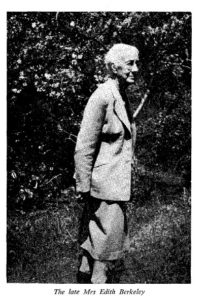
Edith Berkeley, B.A. (1875-1963)
A pioneering expert in polychaetes who spent much of her professional life at the Nanaimo field station, Edith was born to British parents in South Africa. Schooled in England, she intended to complete her studies in medicine at the University of London, but switched to chemistry and zoology. She and her husband first visited what was to become the Nanaimo Pacific Biological Station in the summer of 1917 while Edith was teaching zoology in the early days of the University of British Columbia and her husband was teaching bacteriology. In 1919 the Berkeleys moved permanently to Nanaimo where Edith began her polychaete studies as a “volunteer investigator” and continued this research for about 44 years. During the 1920’s Edith published several papers on the little-known polychaete annelids in waters off Nanaimo, B.C., and by about 1930 she persuaded her husband Cyril to join her in the study of polychaete taxonomy. Over a period of 64 years they published 92 papers on polychaetes, 34 jointly. The annual “Edith Berkeley Memorial Lecture” was inaugurated by the University of British Columbia in 1969. A fuller biography of Edith and her husband Cyril’s legacy is given in [1] and a brief write-up of her history is also available here.
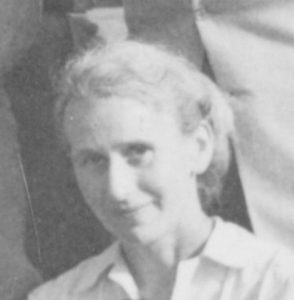
Alfreda (née Berkeley) Needler (1903-1951)
Edith Berkeley’s daughter, Alfreda, was a published marine scientist of significant eminence on her own account, having discovered the existence of sex reversal in animals: first in West Coast shrimps and then in East Coast (Prince Edward Island) oysters. She also carried out excellent research on the red tide organism Gonyaulax and related subjects. Alfreda was also the wife of Alf Needler (see below). Two of Alfreda’s children also became actively engaged in marine research: Mary Needler Arai (marine biology) and George Needler (a physical oceanographer).
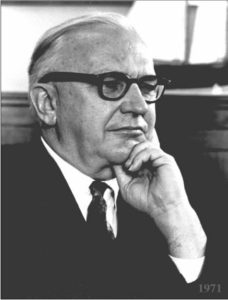
Alfred Walker Holinshead Needler, Ph.D., C.M., O.B.E., F.R.S.C. (1906–1998)
Alfred “Alf” Needler, scientist, administrator, diplomat and statesman, was born in Huntsville, Ontario, and went to the University of Toronto in 1922. While there, he was influenced by A. G. Huntsman, the pioneer Canadian oceanographer and fishery biologist, to begin a career in fisheries research. His first task, starting in 1924, was a study of fishery statistics for the Biological Board of Canada (subsequently called the Fisheries Research Board of Canada). Research on the biology of haddock followed in 1926–29, providing the topic for his doctoral degree. On graduation, he was put in charge of oyster farming research at Ellerslie on Prince Edward Island until, in 1941, he became Huntsman’s successor as Director of the Biological Station in St. Andrews. Alfred Needler was a delegate to the London Conference of 1943, called to prepare for post-war regulation of the North Atlantic fisheries. At the negotiation of the International Convention for the Northwest Atlantic Fisheries (ICNAF) in Washington in 1949, Alfred Needler was the alternate Canadian delegate. His appointment as Assistant Deputy Minister of Fisheries for the period 1948–50 reflected the importance of his role in Canadian preparations for these crucially important negotiations. In 1954 he moved to British Columbia, as Director of the Pacific Biological Station in Nanaimo, and in 1963 to Ottawa as Deputy Minister of Fisheries. On retirement from the civil service in 1971, he returned to live in St. Andrews, but retirement was in name only. He maintained the role of Canada’s senior negotiator in fisheries matters for the rest of that decade, as well as serving as the first executive director of the Huntsman Marine Laboratory (an educational institution supported by universities and government) from 1971 to 1976. The Canadian Coast Guard research trawler CCGS Alfred Needler is named in his honour
A fuller biography of Alf Needler’s contributions is available in his obituary [2].

Mary Elizabeth Needler Arai, B.Sc., Ph.D.. (1932-2017)
Mary Needler Arai was a third generation Canadian female scientist and world renowned zoologist, specializing in the biology of jellyfish. Daughter of Alfreda (née Berkeley) and Alf Needler, granddaughter of Edith Berkeley (see above), Mary was raised in a family of matter-of-fact Canadian feminists and marine scientists long before the term became fashionable. Educated at the University of New Brunswick, University of Toronto, University College London, Plymouth Marine Lab, and the University of California, Mary became a professor at the University of Calgary until her retirement. At her retirement she and her husband Hisao rebuilt the family cottage next to the Pacific Biological Station as a modern house on the shore of Departure Bay, with the lower floor almost entirely devoted to use as a joint laboratory and reference library; the property had been in the family’s hands since her grandparents’ arrival more than a century earlier. In addition to her outstanding personal scholarship, which includes several important monographs on “jellies”, just shortly before her death Mary published what was to be her final publication [3] summarizing the contributions of nearly a century of women scientists to Canadian marine science; she did not include her own work. A longer review of Mary’s work is contained in [4].
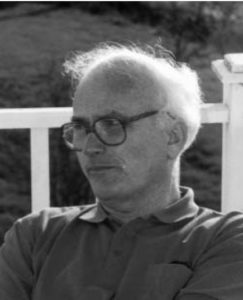
George Treglohan Needler, Ph.D., F.R.S.C. (1935-2002)
Son of Alfreda & Alf Needler (see above), George initially studied mathematics and physics at the University of British Columbia, and then switched to high energy physics at McGill where he received his Ph.D. The only member of the Needler clan not to specialize in marine biology, and despite having apparently made a conscious decision to move away from marine science [5], George was recruited back into marine science when he was head-hunted to join the new Bedford Institute of Oceanography in Nova Scotia even before he had finished his Ph.D. The decision was to prove prescient on many levels, for George went on to make many important contributions in physical oceanography during a long working career at BIO. Elected as a Fellow of the Royal Society of Canada (as was his father), it seems fitting that he was later to lead a Royal Society of Canada Working Group reviewing the science of the interactions between marine fish and the environment. A fuller summary of his life is provided in [5].
References for Dynasty biographies
1 Stevenson, J.C., Edith and Cyril Berkeley – An Appreciation. J. Fish. Res. Bd Can., 1971. 28(10): p. 1359-1364.
2 Halliday, R.G., Alfred Walker Holinshead Needler 1906–1998. Journal of Northwest Aquatic Fisheries Science, 1998. vol 23. Available from: https://web.archive.org/web/20070623005513/http://journal.nafo.int/J23/frontpag.pdf.
3 Arai, M.N., Some Contributions of Women to the Early Study of the Marine Biology of Canadian Waters, in A Century of Maritime Science: The St. Andrews Biological Station, J. Hubbard, D.J. Wildish, and R.L. Stephenson, Editors. 2016, University of Toronto Press. p. 50-77.
4 Purcell, J.E. and D.W. Welch, In memoriam: Dr. Mary N. Arai. PICES Press, 2018. 26(2): p. 15-16. Available from: http://meetings.pices.int/publications/pices-press/volume26/PPJul2018.pdf.
5 Clarke, A., George Treglohan Needler. Proceedings of the Royal Society of Canada, 2002. SEVENTH SERIES(I): p. 174-177. Available from: http://rsc-src.ca/civicrm/file%3Freset%3D1%26id%3D365%26eid%3D1117.
William J.K. Harkness (1896-1961)
W.J.K. “Bill” Harkness (b. Apr. 28, 1896; d. July 5, 1961) was an influential figure in fisheries and aquatic sciences in Canada in the early to mid-20th century. Harkness spent most of his career as Director of the Ontario Fisheries Research Laboratory (OFRL) at the University of Toronto (1924-46) followed by Director of the Fish and Wildlife Branch in the then Ontario Department of Lands and Forests until 1960. His influence was of another era – a person who believed in a strong link between fisheries science and resource management and led people in both university research and government policy to sustain that link. His influence was less in the scientific literature and more in the mentoring and leadership roles that he played in Ontario and in the fisheries and aquatic science enterprise.
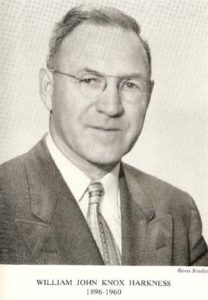
Initially, Harkness fulfilled this role at the University of Toronto by directing research at Lake Nipigon (1924-26), Lake Nipissing (1929-35), and finally at Lake Opeongo (1936-46), all within the Ontario Fisheries Research Laboratory. He continued this role as director of Ontario’s new Fish and Wildlife Branch beginning in 1946. There he established a tradition of fish and wildlife policy and science that continues to this day in the Ontario public service. The fisheries and wildlife science groups currently operating in the province began under his leadership.
Early in his career, Harkness and J.R. Dymond attended one of the founding meetings of the Ontario Federation of Anglers in 1926 as science advisors. From that point onward, Harkness maintained a science advisor role with the anglers and hunters of Ontario, including his role as secretary to the Special Committee on the Game Fish Situation in 1928-30. This was a pivotal role for him because it changed his view of fisheries science essentially as a natural history survey during the Lake Nipigon phase of OFRL to a focus on productivity and fisheries science beginning in the Lake Opeongo phase of OFRL. He recognized the scope of information needs among anglers in Ontario and worked for the balance of his career in maintaining their interests in the application of science. In recognition of his long interest in supporting angler concerns, the field station at Lake Opeongo (Ontario Ministry of Natural Resources and Forestry) was dedicated to his memory in 1961 and bears his name, the Harkness Laboratory of Fisheries Research. This recognition was led by the Ontario Federation of Anglers and Hunters at the time.
His leadership of science and government are reflected in the positions he held in many organizations during his career. He was a member of the American Fisheries Society beginning in 1928 until his death, serving as AFS President in 1950-51. He was President of the Limnological Society of America (precursor of ASLO; 1940-41), vice-president of the American Society of Ichthyologists and Herpetologists (1940), member of the Great Lakes Fishery Commission (1955-61), and President of the International Association of Game, Fish and Conservation Commissioners (1956-57). Bill Harkness was awarded an honorary life membership by the Ontario Federation of Anglers and Hunters. His place as a mentor and leader of fisheries and aquatic science in Canada is reflected in the who’s who of the discipline in this country who were part of the OFRL during their formative years.
Biographies for 2016 inductees:
Steven Campana
Steve Campana is among the most cited active fisheries scientist in the world and most recognizable in the world. His work on micro-otolith structure and age and growth is the foundation by which we can understand fish populations at fine scales. With this foundational research he has advanced the entire field of fisheries science, turning critical age and growth calculations into accurate and reliable measures, validated through innovative use of daily increments and bomb radiocarbon. Steve was the youngest Senior Scientist in the history of the Department of Fisheries and Oceans where he had worked for more than 30 years. Steve is an exemplary scientist who approaches each new project with a clear understanding of the problem at hand and through experiments designed to decisively arbitrate between hypotheses. He has carried this precision of craft into his aging and satellite telemetry work on sharks in the North Atlantic, and he is now recognised as the world authority on the aging of fish. Over the years Steve has proved and exceptional mentor to dozens of staff, undergraduate, and graduate students, maintaining a pointedly critical yet curiously incisive style that rewards scientific thinking. He is one of Canada’s premier fisheries scientists.
John Dymond (Deceased 1965)
Dr. Dymond was that Head of Zoology at the University of Toronto, Director of Zoology at the Royal Ontario Museum (ROM; 1931-1948) and One of the founders of Ontario Federation of Field Naturalists (1934). At the University of Toronto he was also appointed lecturer of Systematic Biology. In 1922 he began a long association with the ROM of Zoology, as secretary to the director. His specialty being taxonomy of fishes, he expanded the collections, which became the basis of much subsequent work. Professor Dymond was appointed Head of Biology in 1948. He was concerned especially with the conservation of renewable resources and saw the role of the department as conducting the graduate level research, which would underpin conservation. Professor Dymond had a great interest in students and was quick to help when needed. The bibliography of Dymond publications (1962) listed 19 on fish and wildlife topics, including monographs on lakes Erie, Nipigon, Abitibi, Ontario. Taxonomic groups of greatest interest were salmonids, coregonids, and centrarchids. In 1964 he published “History of Ichthyology in Canada”. The two central themes of Professor Dymond’s professional life were the taxonomy plus biology of fishes and the conservation of fish and wildlife via public education. He was a founder of the Federation of Ontario Naturalists and in demand as an organizer of nature studies. He served on the Great Lakes Fishery Commission as chair of the Advisory Committee of Fisheries and Wildlife Research, Ontario and was named Officer of the British Empire for his many services to the Government of Canada.
Don McPhail
Dr. John Donald “Don” McPhail is a highly respected, systematic ichthyologist. He began his academic and research career at the University of British Columbia, initially pursuing a major in English. An Introduction to the Biology of Fishes class taught by Dr. Cas Lindsey piqued his interest in fish and he never looked back. Don went on to earn his M.Sc. (1959) at UBC as a student of Dr. Lindsey’s, and then did his Ph.D. at McGill University (1963).
Upon graduation, Dr. McPhail was hired by the University of Washington’s School of Fisheries as an Assistant Professor and as Curator of Fishes (currently, the Burke Museum). There, he was tasked with restoring the large fish collection which had succumbed to a lack of attention. He and his graduate students overhauled the collection and added numerous new specimens to it.
In 1966, Dr. McPhail had the opportunity to join the new Institute of Animal Resource Ecology at UBC. Although he had enjoyed his time and research at UW, he returned to UBC so that he could raise his young family back home in Canada. At UBC, he was employed as an associate professor in the Zoology Department; in 1972, he obtained full professorship. His research work focused on speciation, evolution, ecology, and biogeography of freshwater fishes. As with his time at UW, he spent several years as the curator for the Ichthyological Museum at UBC (now the Beaty Museum). In 1971, Dr. McPhail received a Fellowship from the Smithsonian Tropical Research Institute in Panama. He returned home with over 500 specimens of fish which are now part of the fish collection in the Beaty Museum. Several years later, he received a Killam Senior Fellowship (1988-1989) to do a sabbatical at the New Zealand at the University of Waikato where he focused the endemic freshwater fish. Through the course of his career, Dr. McPhail published over 85 highly cited journal papers, book chapters, and books. Dr. McPhail participated in a variety of learned societies, including the American Fisheries Society, the American Society of Ichthyology and Herpetology (where he was Governor between 1966 and 1970), the Canadian Society of Zoology, and the Canadian Committee for Freshwater Fisheries Research, serving as President in 1993.
Upon his retirement from UBC (1999), he received the Murray A. Newman Award (Vancouver Aquarium) for life-time achievement in Aquatic Research. He continued to publish numerous research papers with colleagues as well as his highly praised books such as The Freshwater Fishes of British Columbia (2007) and Wild Steelhead: Biology and Conservation (2016).
Dr. McPhail will undoubtedly be remembered not only for his accomplishments in fisheries science but also for his wry sense of humor that endeared him to his colleagues and students.
Daniel Pauly
Daniel Pauly had already initiated his work on FishBase, the hugely popular global encyclopedia of fishes, and on ecosystem modelling before he joined the University of British Columbia’s Fisheries Centre in September 1994. He was recruited from an international research centre in Manila, Philippines, where he worked for 15 years and become an authority on tropical fisheries. His best work, though, was done in Canada, notably his two widely-cited papers on ‘shifting baselines’ and ‘fishing down marine food webs’, which were published in 1995 and 1998, respectively. His biggest contribution, however, was his founding of the Sea Around Us project in 1999, an immensely productive activity which set out to reinvent fisheries research, and transform it from locally-based studies of the tactics of various fisheries to the examination of their strategy as elements of a global (sea) food producing system. This led to much-acclaimed examinations of the distorting role of Chinese fisheries statistics, with key papers on this in 2001 and 2012; a quantification of the loss of top predators in marine ecosystems; the spatial expansion of fisheries in response to the local depletions they induce; and to a series of other influential papers and books on the impact of fisheries on ecosystems, most of them with global scope, as made possible by the spatialized global catch data that his Sea Around Us project made available through its popular website. For this, and a strong commitment to teaching, to civil society and to informing the public in various media, in Canada’s two national languages, Dr. Pauly, who is extremely well-cited by his peers; won numerous awards from various countries, including an honorary doctorate from the University of Montreal; and being named a Fellow of the Royal Society of Canada, is well-qualified for the title of “Canadian Fisheries Science and Management Legend.”
Jack Vallentyne (Deceased 2007)
Jack Vallentyne was a Hutchinsonian biogeochemist with interests in cosmo-chemistry, planetary health, paleo-limnology, molecular ecology, ballet and the theatre. He led the famous Fisheries Research Board/DFO Eutrophication Section at the Winnipeg Freshwater Institute, and was the mastermind behind the creation and staffing of the Experimental Lakes Area (ELA). He moved on to public governance & policy matters at Canada Centre for Inland Waters in Burlington, Ontario. As a consultant to the International Joint Commission, he was largely responsible for the Canadian/USA government adopting a policy of a whole ecosystem approach, the watershed as well as the lake, with concerns about nutrient loading of the St. Lawrence Great Lakes. He was internationally well known & respected, held high office in many scientific organizations, wrote several books, and was affectionately known to primary school kids as “Johnny Biosphere”.
Biographies for 2015 inductees:
David W. Schindler
David W. Schindler’s name is synonymous with freshwater biology in Canada. Dr. Schindler was born in North Dakota and completed a bachelors degree in zoology at North Dakota State University. He was then named a Rhodes Scholar and studied aquatic

ecology at Oxford University, first under Nikolaas Tinbergen and then Charles Elton, obtaining his Ph.D. in 1966. After a brief stint as an Assistant Professor at Trent University in Peterborough, Ontario, Dr. Schindler was hired by the Department of Fisheries and Oceans Canada to direct the Experimental Lakes Area located near Kenora, Ontario. Here he was instrumental in detailing the impacts of several environmental issues on freshwater systems including, acid rain, eutrophication, and toxins. Since 1989, David Schindler has been a holder of an endowed chair at the University of Alberta. He has served as president of the American Society of Limnology and Oceanography and as the Canadian national representative to the International Limnological Society. He is the author of over 320 scientific publications.
Listing David Schindler’s awards would be difficult to do in a succinct manner. Some of Dr. Schindler’s accolades include: Fellow of the Royal Society of Canada (1983), Frank Rigler Award from the Canadian Limnological Society (1984), the Stockholm Water Prize (1991), Fellow of the Royal Society (2001), NSERC’s Gerhard Herzberg Canada Gold Medal for Science and Engineering (2001), the Order of Canada (Officer; 2004), the Tyler Prize for Environmental Achievement (2006), and has received 11 honorary doctorates.
John Casselman
If one were to approach an Ontario angler and ask about the science of fish populations, they likely would quote Dr. John Casselman. Dr. Casselman is an environmental physiologist and ecologist who completed his doctorate at the University of Toronto with another CARS legend– E.J. Crossman. He spent the largest part of his career working for the Ministry of Natural Resources in Ontario as a senior fisheries biologist. Now “retired”, Dr. Casselman currently is an adjunct professor at Queen’s University in Kingston, Ontario and is internationally renown for his knowledge on freshwater fish species and the use of calcified structures for aging of fish. He honed his expertise as a youth when he was a fishing guide, and according to him, “I learned a lot about fish, a lot about fisheries and a lot about people who fish”. Dr. Casselman has extensively studied the impact of climate change on fishes and recently has advocated for the “100-mile” diet. Dr. Casselman has been named to the Canadian Angler Hall of Fame (2015), and was awarded the American Fisheries Society Award of Excellence (2008).
Helen Battle (Deceased 1994)
Helen Battle was a revolutionary Canadian scientist and inspirational educator whose career spanned more than fifty years. She began her university education at the age of 16, ultimately earning her PhD in 1928 from the University of Toronto. Dr. Battle was the first woman in Canada to earn a doctorate in Marine Biology and one of just five women in Canada to earn a PhD prior to the Great Depression. Following her graduation, she returned to the University of Western Ontario as an Assistant Professor in the Zoology Department; in 1949, she attained full professorship. She was passionate about teaching and adored by her students. Summers were spent doing research with the Fisheries Research Board of Canada in St. Andrews, NB. Her research focused on the physiology, embryology, morphology, and ecology of marine organisms. One of her most significant achievements was pioneering the use of fertilized fish eggs to study the effects of carcinogenic substances on development. The results from this investigation opened up new avenues for future cancer research. She was one of the first zoologists to demonstrate that histological and physiological techniques used in science laboratories could also be applied to problem solving in marine biology, thereby opening the doors to innovative lab work rather than depending upon traditional fieldwork alone for marine researchers. Helen Battle was a co-founder of the Canadian Society of Zoologists; she served as president from 1962-1963. Over the course of her life, she received numerous accolades including: the F. E. J. Fry medal from the Canadian Society of Zoologists, the C. J. B. Grant award from the Canadian Association of Anatomists, the Canadian Centennial Medal, was selected as one of 19 outstanding women scientists by the Museum of Natural Science, and she was made an honorary life member of the American National Association of Biology Teachers.
Harold Harvey
Harold Harvey was born in Winnipeg, worked on provincial fisheries surveys as an undergraduate and earned his M.Sc. under the supervision of cestode experts, Robert A. Wardle and James A. McLeod. Doctoral research at the University of British Columbia on sockeye salmon was supervised by William Hoar and Peter Larkin under the sponsorship of the International Pacific Salmon Fisheries Commission. Harold took leave as Director, Cultus Lake Laboratory, to do a post-doctoral year with Professor Fred Fry at U of T. This quickly morphed into a lifetime teaching position, interrupted only by sabbatical studies in Australia and Norway. Harold’s arrival in Toronto coincided with an interest by Ontario Ministry of Natural Resources in Pacific salmonids and in regional limnology/fisheries. The result was a simultaneous series of studies in the lakes of Manitoulin Island and the LaCloche Mountains, north shore Georgian Bay. The fishes in the latter group of lakes were undergoing rapid reduction in kinds and abundances of species. The cause of this was identified as acidification caused by long-range transport of atmospheric sulphur dioxide/trioxide/sulphuric acid. The Manitoulin lakes yielded interesting patterns of species occurrences in relation of physical, chemical, and biological factors and led to geographic comparisons with survey results from lakes of the Bruce Peninsula, the Wawa region, plus lakes in Muskoka, Haliburton and Parry Sound.
Acidification studies were extended to using fish gills as indicators of aluminum toxicity and blood ion changes as measure of physiological stress. Final step was relating the impact of acid snow melts and acid precipitation events to episodic fish kills. Concurrently Professor Harvey was called upon for scores of presentation, scientific, public and to politicians until a Canada – United States agreement was signed for the purpose of reducing sulphur emissions, the precursors of acid rain. This effort to identify and control the effects of acid disposition was read into Hansard, the parliamentary record. In order to minimize the interference with game fish species, the principal fish of study became the ubiquitous white sucker, resulting in a series of publications on population dynamics, contaminants, feeding and ecology.
Harold Harvey supervised 35 graduate students and published some 100 papers, many with his students. Within the zoology department, Professor Harvey served as associate Chair, Graduate Affairs, Acting Chair, and as departmental Development Officer, which was directed specifically at fundraising for undergraduate and graduate scholarships. This activity continued post-retirement, yielding some 40 endowed scholarships in the Department of Ecology and Evolutionary Biology.

Pierre Legendre
Dr. Pierre Legendre is a community ecologist and professor in the biology department ofUniversité de Montréal. His research concerns the ecological and biogeographic processes underlying the temporal and spatial organization of biodiversity. Dr. Legendre completed a M.Sc. in zoology at McGill University in 1969, a Ph.D. in biology at University of Colorado in 1971, and a postdoctoral fellowship at Genetiska Institutionen, Lunds Universitet in Sweden in 1972. He was appointed as a research associate, then research director at Université du Québec à Montréal in 1972, before joining the biology department of Université de Montréal in 1980.
His research led to the development of quantitative methods to analyse multivariate ecological data and the emergence of the discipline of numerical ecology. He is known for his interest and expertise in spatial, multivariate and beta-diversity analysis. Dr. Legendre published the book Écologie numérique with his brother Dr. Louis Legendre (oceanography) in 1979, further translated in English (Numerical Ecology, 3rd English edition, 2012), and now considered a key reference for the analysis of multivariate ecological data. Dr. Legendre also participated in the creation of the Vegan package in R, and is a coauthor of the practical guide Numerical ecology with R.
His contribution to the field of numerical ecology has application in conservation and natural resource management, but also to other disciplines such as criminology and archaeology. Through his career, Dr. Legendre was awarded numerous distinctions. Most notably, he was awarded Recipient of the 2005 Prix Marie-Victorin of the Government of Québec, became Officer of the National Order of Quebec in 2007 and figured on ISI Highly Cited Researcher in Environment/Ecology list in 2001, 2014 and 2015. Dr. Legendre still teaches quantitative methods to graduate students and collaborates with researchers worldwide as a leading expert in numerical ecology.
Richard (Dick) Beamish
Dr. Richard (Dick) Beamish obtained his Ph.D. from the University of Toronto in 1970. He began working at the Fisheries and Oceans Canada Pacific Biological Station in Nanaimo, B.C. in 1974. He was the Head of the Groundfish Section from 1977-1979 and Director from 1980-1993. Dr. Beamish served as a Senior Scientist at the Biological Station until his retirement in 2011. He currently serves as Emeritus Scientist at the Biological Station.
Dr. Beamish’s remarkable research career has spanned five decades and includes over 400 publications. His accomplishments include discovering acid rain in North America, identifying new methods for ageing fish, discovering a new lamprey species, providing insights into lamprey evolution and classification, and understanding the effects of effects of climate on Pacific salmon and other fishes.
In honour of his many accomplishments, Dr. Beamish received the Order of Canada and the Order of British Columbia. In 2001, he was elected as a Fellow of the Royal Society of Canada. Dr. Beamish received the Prix d’Excellence from Fisheries & Oceans Canada, for valuable contributions to the Department and the Public Service as a whole. He was recognized by the International Panel on Climate Change for contributing to the Nobel Peace Prize for 2007.
Since his retirement, Dr. Beamish remains active in research and professional activities, including serving as Editor forTransactions of the American Fisheries Society.
Biographies for 2014 inductees:
Carl Walters
Carl Walters may be the scientist who has had the greatest impact on the development of fisheries science in the last 50 years. His career has been centered at the University of British Columbia where he has served on faculty since 1969. At UBC, he was recruited and worked with the eminent ecologist C.S. (Buzz) Holling with whom he developed the concept of adaptive management. With an understanding of how computers were opening a new era of quantitative ecology, they organized dozens of workshops where practitioners and modelers jointly asked management questions and evaluated how implementation was best done. Since then, adaptive management has become widespread and a byproduct originally described in his 1986 book, Adaptive Management, and now known as Management Strategy Evaluation is currently the hottest topic in fisheries management.
Walters continued from applied ecology to developing methods for fisheries assessment, and notably his career-long work with Ray Hilborn, which resulted in the trend setting “Quantitative Fisheries Stock Assessment” in 1992, has added to Walters’ recognition internationally. As an offspring of his background in ecology and fisheries, he also successfully merged the two fields through his contribution to the Ecopath with Ecosim approach and software. This is the world’s most widely used ecosystem modeling approach, and it is increasingly being used for ecosystem-based management of aquatic resources.
While Walters’ contributions to methodology development in fisheries include key developments in at least three fields, management methodology, fisheries assessment, and ecosystem modeling and management, he is also recognized for his strong contribution to education. He has educated a generation of fisheries scientists that now influence how fisheries management is conducted in British Columbia, Canada, and indeed throughout North America. This legacy will live on for generations to come.
Henry Regier
Dr. Regier joined the University of Toronto in 1966 as an Assistant Professor in the former Department of Zoology. He completed graduate and post-doctoral work at Cornell University, which focused on fish and fisheries in upstate New York. His career was dedicated to education and advocacy around the human use of aquatic systems. Dr. Regier’s research has aimed to balance both conceptual and practical concerns, incorporating the work of scientists, philosophers, policy-makers and others into an interdisciplinary perspectives on emerging environmental issues. Throughout his career, he maintained an expert role in policy discussions for international organizations such as the United Nations Environmental Program and the Intergovernmental Panel on Climate Change and was a Canadian delegation member at various international conferences such as two United Nations conferences on human population. He has also served as an advisor on environmental issues to senior politicians, including former Liberal MP Charles Caccia, former Mayor of Toronto and Conservative MP David Crombie, and the late NDP leader Jack Layton. He sat on the Great Lakes Science Advisory Board of the International Joint Commission of Canada and the U.S. (1987-90) and was the Canadian Commissioner of the Great Lakes Science Advisory Board (1980-89).
Henry was a Director of the former Institute for Environmental Studies (1989-94) and Professor in the former Department of Zoology (1966-1995) at the University of Toronto. In 2008, Professor Emeritus Henry Regier was appointed to the Order of Canada (Membership), Canada’s highest civilian honour. His appointment commemorates his “leadership in national and international organizations concerned with environmental conservation,” and marks over 40 years of academic and community leadership in environmental issues, particularly those affecting the Great Lakes. His previous commendations include the Centenary Medal of the Royal Society of Canada, the Conservation Award of the Federation of Ontario Naturalists, the American Fisheries Society Award of Excellence, and the Lifetime Achievement Award from the International Association of Great Lakes Research.
Since his retirement in 1995, he has continued to mentor students and faculty in an Emeritus role, and as an Adjunct Professor at the University of Waterloo and Michigan State University.

Casimir Lindsey (Deceased 2022)
Dr. Cas Lindsey earned a B.Sc. from the University of Toronto in 1948. He completed his M.A. at the University of British Columbia in 1950 under the supervision of Dr. Peter Larkin. Cas then went to Cambridge University in England where he earned his Ph.D. in 1952 under the direction of Professor Sir James Gray. He returned to UBC and joined the Zoology Department, Institute of Fisheries in 1953, where he worked until 1966. He then moved to the University of Manitoba in Winnipeg as a full professor in the Zoology Department. Cas stayed with the University of Manitoba for 13 years. He then moved back to the University of British Columbia in 1979 until his retirement in 1989. Dr. Lindsey’s specialization was biogeography, and ecology and taxonomy of western and northern freshwater fishes. He wrote several books including as editor, with C.S. Woods, of Biology of Coregonid Fishes (1970), and with former student, Dr. Don McPhail, Fishes of Northwestern Canada and Alaska (1970). He was a founding member of the Canadian Society of Zoologists (CSZ) and served as both a Council member and President before becoming an Honorary Member of the society in 1992. The C.C. Lindsey Prize is given by the Ecology, Ethology and Evolution Section of CSZ each year for the best student presentation (oral or poster) within the fields of behaviour, ecology, or evolution. Dr. Lindsey has been honoured by the Wildlife Society and was named a Fellow of the Royal Society of Canada in 1974. Also, in retirement, he became a recognized artist in an impressionist “Group of 7” style.
Several of Dr. Lindsey’s former graduate students wrote personal eulogies to him after his death in 2022. These may be accessed at: https://cars.fisheries.org/in-memoriam-dr-c-c-lindsey/
Bev Scott (Deceased 2014)
Dr Bev Scott, B.Sc., Ph.D., Fellow of the Royal Society of Canada, passed away peacefully in hospital on the day that he was elected to the “Legends of Canadian Fisheries Science and Management”, after a very short illness. He would have been touched by the honour and no doubt would have accepted it with both a smile and a slightly self-deprecating comment about how it really should have been awarded to someone else! Bev’s award is but the last in a long list of awards reflecting in equal measure his capacity for work, scientific intellect, and fundamental human kindness and decency.
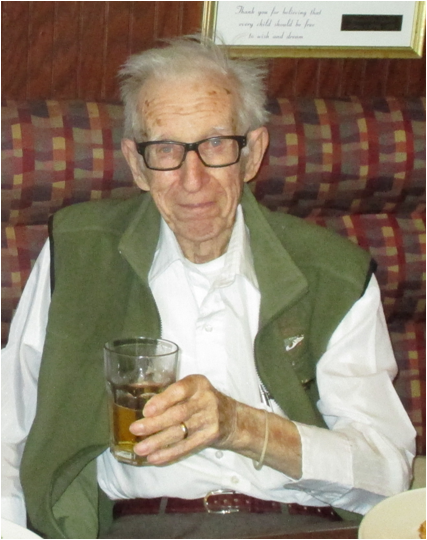
Bev completed both his B.Sc. (1941) and, following his discharge from the Canadian Army at the end of the Second World War, his Ph.D. (1950) at the University of Toronto. Immediately after graduating he assumed the role as first curator of Ichthyology at the Royal Ontario Museum (ROM), a position he held until his retirement in 1976.
Without any doubt the most important of Bev’s manifold contributions to Canadian Fisheries were made during his long tenure at the ROM, where over the years he personally dealt with the Atlantic and Central Canadian fishes and arranged for his eventual colleague at the ROM, E.J. Crossman, to deal with the Pacific fishes. This phase of his work is best exemplified by the massive book “Freshwater Fishes of Canada”, which was co-authored with E.J. Crossman, and is often simply referred to as “Scott & Crossman” rather than by the actual book title. Typical of his cheerful enthusiasm, at retirement from the ROM he moved east from Toronto to St Andrews, New Brunswick, with his wife Milly, and started his second career as the Director of the Huntsman Marine Lab. During Bev’s “retirement” he completed a major revision to his earlier book Fishes of the Atlantic Coast of Canada, (Leim & Scott, 1966) producing the completely reworked book “Atlantic Fishes of Canada” (Scott & Scott, 1988), which was co-authored with Milly.
Bev lived life to the end in a full and graceful way, characteristic of his whole life. Not many fisheries scientists can say that they have had an extensive, nearly exhaustive summary of their life published before they pass away, but Bev was in that select category, with an excellent summary of many of his accomplishments documented in Smith (2006). It is unnecessary to repeat here what is already available in the Copeia article, but interested readers should certainly follow up with this detailed and highly laudatory summary of Bev’s career.
Zbigniew (Bob) Kabata (Deceased 2014)
Dr Kabata is recognized as the foremost world expert on parasitic copepods, having named over 100 new species of parasitic copepods. A major achievement is the book on the Parasitic Copepoda of British Fishes with over 2000 illustrations which he meticulously drew. He joined the staff of the Pacific Biological Station in 1966 where he was among the first to demonstrate that parasites provided important stock information. He also headed up the Section on Groundfish, chaired the committee that reviewed all science programs and recommended areas of funding for the upcoming year. Bob never turned down a request for scientific or administrative help. Bob Kabata is fluent in a number of languages and always found time to translate a paper into English or even help a colleague with some English grammar. Bob has a long list of awards and several honorary degrees. In 1996, he received Poland’s highest decoration, the Grand Commander Cross of Polonia Restituta for his bravery as a young leader of a group of partisan soldiers in the Second World War and his science. He received the Order of Canada in 2006 for his internationally recognized research on the biology and systematics of marine parasites. In addition to his scientific accomplishments, Bob writes short stories and poetry. His poems are well known in Poland and displayed on monuments. Recently, a thick book of his collected poems was published in Polish. Zbigniew Kabata retired in 1989 and continued to come to his office until some health issues slowed him down around Christmas 2013. Dr Kabata is a humble and deeply religious man who is truly one of Canada’s most renowned scientists.
Fred (FEJ) Fry (Deceased 1989)
Fred Fry’s stellar achievements were widely recognized by his peers, who, with his encouragement, developed them further. His work was remarkably diverse, ranging from seminal contributions in ecological physiology and environmental factors through practical methods in quantitative population biology to pioneering stakeholder collaboration in field projects. He won numerous awards but was characteristically uninterested in self-promotion.
Fred’s perceptiveness and integrity were exceptional, as were his clear ethics, willingness to share, and unobtrusive acts of kindness. Fred’s friendly collegiality and insights encouraged colleagues and students to contribute to traditions that continue today.
As a young man, Fred worked in his family’s wholesale fish business, where he met Prof. A. G. Huntsman. Fred thrived as a student at the University of Toronto in the 1930s, joining a multidisciplinary, intergenerational and inter-university research network that shaped present-day fisheries science and practice in Canada.
In 1936, Fry and colleagues frequently motored the 300 kilometres to Algonquin Park to establish a field laboratory, which became the present-day Harkness Laboratory of Fisheries Research. After one very difficult day, when everyone was exhausted, Fred insisted on reading aloud a chapter from On the Origin of Species.
Fred helped initiate open-ended research programs at several locations across Ontario (e.g., South Baymouth, Algonquin Park, Baie du Doré, Nogies Creek). The openness and relevance of these labours made Fred trusted by the public clientele that each project served and greatly respected by commercial fishers. This respect helped in the development of a harvest quota system for Ontario’s Great Lakes commercial fisheries in the late 1980s.
Late in life, Fred was awarded an honorary doctorate by the University of Toronto in recognition of his excellence. Sadly, he passed away just before the award ceremony and it was left to his family and colleagues to accept this formal recognition for his lifetime of scientific and educational contributions.
Ed (EJ) Crossman (Deceased 2003)
Ed, or E.J. as he was fondly known to his many friends and colleagues, was a dominant figure in Canadian and international ichthyology, fisheries research, and conservation biology, particularly involving introduced and endangered species; an authority on fishes, their ecology, distribution, evolution, and systematics; and, a world authority on esocid fishes, his special passion. He was particularly interested in zoogeography and the postglacial distribution of freshwater fishes in Canada.
He was engrossed in fish and fisheries for half a century, starting with his academic training at Queen’s University, University of Toronto, and University of British Columbia, then through his long association with the Royal Ontario Museum, commencing in 1957, and into his retirement in 1995 as Curator Emeritus of Ichthyology at the ROM and Professor Emeritus, Department of Zoology, U of T. His in-depth personal knowledge of fishes and fisheries, his long list of scientific publications (more than 200), authored and co-authored books, book chapters, and articles both scientific and popular, as well as his practical field experience and numerous collecting excursions throughout Canada and the world, earned him a well-deserved national and international reputation, numerous awards, and inductions into halls of fame.
Ed’s generous and enthusiastic spirit, his knowledge and insights, and his keen pursuit of the facts made his advice highly and frequently sought, a careful listener and helpful advisor to the many ichthyologists, fisheries biologists, and anglers who approached him. He gave kindly, yet straightforwardly and thoughtfully, a decisive individual with a strong formative presence that matched his stature. He pursued knowledge with enthusiasm, indeed passion.
A primary labour of love was Freshwater Fishes of Canada, co-authored with his colleague and long-time friend, W.B. (Bev) Scott. Dr. Scott reminisced that FFC was hatched during the 30 nights they were field sampling in Newfoundland in 1960 when they made the first formal collection of freshwater fishes of the island. Bev emphasized that it gave them a long time to discuss the concept and that a synergism had developed between them. Ed’s knowledge of the west, Bev’s knowledge of the east, their new knowledge of Newfoundland, their recent trip to the north on the Barren Grounds survey, and their mutual desire to learn about fishes of the intervening parts of this vast land led to the publication of one of the most important and informative works on freshwater fishes in Canada.
William Edwin (Bill) Ricker (Deceased 2001)
Bill Ricker was a preeminent ecologist, entomologist, fisheries scientist and theoretical biologist. A search online produces more than 100,000 hits for the “Ricker Curve”, 60 years after he first published that landmark paper. Of course the impact of Bill’s work goes far beyond that simple number. His research papers and books are still used internationally as textbooks in graduate courses in ecology, fisheries science and wildlife biology. Bill’s work is widely recognized as one of the foundations of fisheries science, but his influence extends far beyond that field. For example, Bill was the recipient of the Eminent Ecologist Award by the Ecological Society of America (1990). He also received a host of other academic and scientific awards and recognition for his achievements in areas as diverse as entomology, Sherlock Holmes, limnology, wildlife biology and the fishing hall of fame. He was even featured in an article in Sports Illustrated!

Consider the journal where his 1954 paper was published. As Editor from 1950 to 1962, Bill took the Journal of the Fisheries Research Board of Canada from what was essentially an in-house government publication to a world-class international journal. The subsequent name change to the Canadian Journal of Fisheries and Aquatic Science only served to continue that reputation.
Many people were mistaken about Bill Ricker. It was widely assumed that there were two such individuals who shared that name – one who was a world authority on stoneflies – while the other was the international authority on population dynamics and fisheries science – and possibly there was a third one who translated Russian fisheries literature and produced a Russian – English dictionary that is still in use – and maybe there was even a fourth one who did all that scientific editing. We can resolve that confusion – Bill was a singular, remarkable, unique individual.
We remember him as a personal friend and colleague. A remarkably kind, gentle, helpful and gracious scientist with perhaps the most enlarged curiosity and capacity for original thought and reasoning we have ever known. A note to those who share the advantages we enjoy with modern technology. Bill did all his calculations with a slide rule and produced all his publications (probably about 700 in total) on a typewriter. Imagine what he might have done with a computer and word processor!
Joe Nelson (Deceased 2011)
Joseph Schieser Nelson’s (April 12, 1937 – August 11, 2011) first publication (1960) was on the world’s largest wooden fish ladder and its effect on migration of Chinook salmon and other resident fish species on the Yukon River near Whitehorse. In 1960, Joe finished his B.Sc. honors thesis on Kokanee salmon at the University of British Columbia (UBC). In 1962, he finished his M.Sc. degree at the University of Alberta (UA), where he studied the effects on fishes due to changes within the Kananaskis River System, near Banff National Park. Joe returned to UBC and finished his Ph.D. in 1965 under the supervision of Cas Lindsey working on hybridization between Largescale Suckers and White Suckers. In 1965, Joe obtained a position as a Research Associate at the Indiana Aquatic Research Unit, Indiana University, Bloomington, Indiana. In 1967, Joe was appointed Assistant Director of the Indiana University Biological Stations. In 1968, Joe returned to the UA as an Assistant Professor, was promoted to Associate Professor (1972), Professor (1978), and Professor Emeritus (July 2002), where he advised 20 M.Sc. and 9 Ph.D. students to whom he was affectionately known as “Tiger Joe.” With 130 publications on fishes, his best known publications among fisheries students are the four editions of Fishes of the World (1976, 1984, 1994, 2006), Fishes of Alberta (1970, 1992) coauthored with Martin J. Paetz, and Common and Scientific Names of Fishes from the United States, Canada, and Mexico (6th ed., 2004, Chairman of committee, 1991-2010, 7th ed., 2013, Larry Page, Chair). Elected in 2009 as President of the American Society of Ichthyologists and Herpetologists (ASIH), Joe was forced to resign January 2010 due to his illness. Among some of the numerous awards he received were: the ASIH Robert H. Gibbs, Jr. Memorial Award (2002), and theRobert K. Johnson Award for Excellence in Service (2010); the Canadian Society of Zoologists F. E. J. Fry Medal (2010), and the American Fisheries Society William E. Ricker Resource Conservation Award (Sept. 4, 2011).
Ransom (“Ram”) Myers (Deceased 2007 )
Ransom A. Myers was a marine biologist and conservationist best known for his warnings on worldwide overfishing of fish stocks. A native of Mississippi, Ransom A. Myers was first trained as a physicist. At age 16, he won an international science fair with an instrument measuring the symmetry between atoms he built in his bedroom, his « X-ray criystallograph ». He completed a B.Sc. in Physics at Rice University (Houston), worked as a physicist in the oilfields of Kuwait and then went on a series of travels in Nepal and through Africa. His interest in fish is thought to have emerged from these travels, which took him sailing across the Atlantic from Africa to the Caribbean. Dr. Myers received a M.Sc. in mathematics (1981) and a Ph.D. in biology (1984) from Dalhousie University.
While working as a research scientist for the Department of Fisheries and Oceans in St. Johns, Newfoundland (1980s and 1990s), Dr. Myers criticized the Canadian government handling of the Atlantic cod fishery and reported that the collapse of the northern population was caused by industrial fishing practices and overfishing. Later proven right, his findings were first questioned, the government and industry blaming the depletion of stocks on seals or changes in water temperature instead. In 1997, he took the Killam Chair in Ocean Studies at Dalhousie University and published with colleagues a series of papers showing the systematic destruction of marine resources – and biodiversity – worldwide through industrial fishing. His research has shown that the number of large fish in oceans has dropped by 90% in 50 years, and that industrial fishing was killing off big predatory fish, including tuna, cod, swordfish and sharks.
Through his career, Dr. Myers published more than 100 peer-reviewed papers, and served on numerous international commissions on the population dynamics of marine organisms. He was plainspoken and a strong advocate for improving management of fisheries. His studies made headlines more than once, and contributed to the field of fisheries conservation biology. Dr. Myers influenced a large number of environmental scientists, and was recognized by Fortune magazine as one of its Ten People to Watch in 2005.
Wilfred Templeman (Deceased 1990)
Wilfred Templeman stems from a family with a long history of working in fisheries. Templeman attended Memorial University College of Newfoundland for two years and then went to Dalhousie University. After graduation he was offered a scholarship by the Fisheries Research Board of Canada to work on lobsters. Templeman spent three years at St Andrew’s Biological Station in New Brunswick, which provided Templeman with thesis material for his doctoral degree. Dr. Templeman then taught zoology at McGill but returned to Memorial University in 1936 to head the Department of Biology. During this tenure, he continued research on lobster, capelin, and dogfish at the government laboratory at Bay Bulls and later in St John’s.
In 1944 Dr. Templeman got a position as Director of the Newfoundland Fisheries Laboratory, which became the St John’s Biological Station of the Fisheries Research Board after Newfoundland joined Confederation in 1949. He focused his research on existing and potential commercial fish stock around Newfoundland and Labrador. He was also interested in new and scarce fish taken by trawlers. Dr. Templeman and his colleagues reported on the long-lining experiments that had introduced a new type of fishery to the Newfoundland economy.
Dr. Temleman retired as Director at St John’s in 1972 and was appointed first J.L. Paton Professor of Marine Biology and Fisheries at Memorial University. Later that year he received a Public Service Merit Award for high and constant achievements as a scientist, administrator, educator, and advisor to government and industry. Dr. Templeman was a member of Fisheries and Oceans Research Advisory Council in 1981 – 85 and a member of the Royal Commission on Seals and the Sealing Industry in 1984 – 86. In addition, Dr. Templeman has authored over 250 papers on a variety of subjects from vitamin A in liver oils to the affect of the effects of fluctuations in ocean temperatures on marine animals. In 1982 a fisheries research ship was named in Wilfred Templeman’s honor. He was also named to the Royal Society of Canada and the Order of the British Empire.
(bio source: science.ca)
Donald McAllister (Deceased 2001)
Dr. McAllister (1934-2001) was a prominent Canadian fish scientist. He was born in Victoria, British Columbia and received his postgraduate degrees at the University of British Columbia in Vancouver. He served as Assistant Curator at the Institute of Fisheries at UBC (1956) and a Curatorial Assistant in the Division of Fishes, University of Michigan Museum of Zoology in Ann Arbor (1957–1958). Dr. McAllister was also the first Curator of Fishes at the Canadian Museum of Nature (1958–1986). Soon after arriving at the museum, he began new research on the fishes of Arctic Canada and catalogued 410,000 fish specimens. He later served as Research Curator (1986–1991), Senior Biodiversity Advisor (1991–1993) and Researcher Emeritus (1993–2001). While serving as museum curator, Dr. McAllister also held adjunct professorships at the University of Ottawa and Carleton University. He was elected an honorary member of the Ottawa Field-Naturalist’s Club in 1987. He was founding editor of Sea Wind (1987), Canadian Biodiversity (1991, currently Global Biodiversity) and President and co-founder of Ocean Voice International (1989). He co-chaired the IUCN Species Survival Commission Coral Reef Specialist Group (1998) and was a major contributor to the Canadian Biodiversity Strategy. In 1992, he received the Stoneman Marine Environmental Award for his work in marine education. Dr. McAllister’s major focus of research was Arctic marine fishes, sculpins, smelts, Pleistocene fossils and the conservation of rare and endangered fishes. He also contributed to the development of conservation techniques for museum specimens, the early application of GIS analysis in biogeography and evolution and the banning of cyanide use in capturing tropical aquarium fishes. He was known for his perseverance in protecting the oceans and the environment and underlining the importance of biodiversity for Canadians. Dr. McAllister is truly a legend who made significant contributions to fisheries science in Canada.
Archibald Gowanlock Huntsman (Deceased 1973)
Dr. Huntsman was a pioneer Canadian scientist, best known for his research on Atlantic salmon and invention of fast freezing of fish fillets (1929). Dr. Huntsman’s education and career are tightly linked to University of Toronto. He received a Bachelor of Arts degree from that institution in 1905, and in 1907, he completed a Bachelor of Medecine degree and joined the Department of Zoology as a lecturer. He was later appointed a professor in marine zoology (1924), and retired in 1954. In 1911, he was appointed Curator at St. Andrews Biological Station in New Brunswick, permanent curator in 1915, and director (1919-1934). Dr. Huntsman was also Director of the Fisheries Experimental Station in Halifax (1924-1928). While there, he perfected – and introduced – the invention of fast frozen fish fillets and jacketed cold storage. He was also part of the foundation, in 1921, of the North American Council on Fisheries Research, facilitating collaboration on fisheries and oceanographic research in Canada and US. Due to his energy and dedication, Dr. Huntsman became a key figure in the international marine science community. He was president of the Royal Society of Canada from 1937 to 1938.
Recipient of an MD degree, Dr. Huntsman never practiced medicine. His participation in the Canadian Fisheries Expedition of 1914-1915 led him to focus his research to fisheries science. As Director of the St. Andrews Biological Station and of the Fisheries Experimental Station, secretary of the North American Council on Fisheries Research, and professor at University of Toronto, Dr. Huntsman influenced and shaped the Canadian fisheries science agenda while training a generation of fisheries scientists.
Through his career, Dr. Huntsman collaborated with top Canadian and American marine scientists, and published more than 200 scientific papers and reports. In 1952, he was awarded the Flavelle Medal of the Royal Society of Canada for his outstanding contribution to biological science. In 2000, Canada Post issued in his honour a stampentitled “Dr. Archibald Gowanlock Huntsman: The Fisherman’s Friend”. While mostly renown for his research on Atlantic salmon, his research led to important contributions to oceanography, marine ecology, fish migration, the economics of fishing and philosophy.
Peter Larkin (Deceased 1996)
Dr. Peter Anthony Larkin was one of Canada’s most renowned fisheries biologists – an internationally respected expert in aquatic ecology, conservation, resource management, and science policy. Additionally, he was a distinguished university professor, much beloved by all of his students. Peter was born in New Zealand but immigrated to Canada with his family as a young child. He achieved academic excellence throughout his post-secondary education garnering the Governor General’s Bronze Medal upon graduation from Balfour Technical School and the Governor General’s Gold Medal from the University of Saskatchewan. Ultimately, as one of the youngest Rhodes Scholars ever (23 years), he graduated with his D. Phil. degree from Oxford University in 1948.
After graduation, he returned to Canada 1949 where he was appointed Chief Fisheries Biologist for the British Columbia Game Commission. Here, he initiated and directed comprehensive limnological and fisheries studies of B.C. lakes, which led to the inception of scientific management of recreational, freshwater fisheries in the province. During this appointment, he also taught courses in ecology and population dynamics at the University of British Columbia. In 1952, he combined the two roles and set up the provincial Fisheries Research Group at UBC – merging the perspectives of resource management and academic research. In 1955, Dr. Larkin was appointed Director of Institute of Fisheries, and Professor of Zoology at UBC. He later (1963) accepted the position of the Director of the Pacific Biological Station, Fisheries Research Board of Canada, Nanaimo, but returned to UBC in 1966 where he resumed his position as Director of the Institute of Fisheries. In 1972, Dr. Larkin was appointed Head of the Department of Zoology at UBC, a position he held until 1975. Additional prominent, appointments followed, including: Dean of the Faculty of Graduate Studies (1975-84), Associate Vice-President, Research (1980-86), and Vice-President, Research (1986-88). He continued to teach undergraduate and graduate courses, and mentor graduate students at UBC until his retirement in 1990.
During his career, Dr. Larkin produced definitive papers on fish population biology. He pioneered the use of mathematical modelling of fish stocks that lead to an understanding of fish population dynamics. He made notable contributions to the theory of resource management and to understanding predator-prey relations. He made major contributions with respect to shaping scientific policies as he participated in numerous national and international government commissions. Throughout his career and his retirement, Dr. Larkin published over 160 scientific papers. He served on more than fifty boards and committees – internationally, nationally, and provincially. Some of these included: the Food and Agriculture Organization of the United Nations, the Inter-American Tropical Tuna Commission, Marine Productivity Subcommittee of the Canadian Committee for the International Biological Program (Chairman), National Research Council of Canada, Science Council of Canada, Natural Sciences Engineering Council of Canada, the Science Council of B.C., the B.C. Research Council, and the B.C. Biomedical Research Centre.
Honours and awards bestowed upon Dr. Larkin are seemingly countless. He was named a Fellow of the Royal Society in Canada in recognition of outstanding scientific achievements. For his passion and excellence in teaching he was awarded the Master Teacher Award (1971) and the esteemed title of University Professor (1988), one of the highest honours bestowed by UBC on its faculty. He received the Queen’s Jubilee Medal (1977), the Canadian Society of Zoologist’s Frey Medal (1978), the American Fisheries Society Award of Excellence (1984), the American Institute of Fishery Research Biologists Outstanding Achievement Award, the Order of Canada (1995), the order of British Columbia (1996)and numerous other distinctions. CARS also recognizes the life and achievements of Peter Larkin through an annual award given to PhD and MSc students who have demonstrated excellence in research, leadership, outreach, and communication (click here for more information).
Dr. Peter Larkin passed away in July 1996 in British Columbia.

Bill Hoar (Deceased 2006)
William S. Hoar, FRSC, is honoured for his outstanding contributions to the development
of comparative physiology in Canada and abroad. He is best known for his research on the evolution, behaviour and physiology of smoltification in salmonid fishes. Two seminal works on the subject, the first published in the Journal of the Fisheries Re
search Board of Canada in 1976 and the second, published as a chapter in 1988 in the famous ‘Fish Physiology’ series, co-edited by W.S. Hoar and D.J. Randal, have garnered over 1, 300 citations as of mid-2014. Professor Hoar is also renowned for his highly successful 1966 textbook, well known by several generations of biology students, entitled ‘General and Comparative Physiology’. W.S. Hoar was born in Moncton, New Brunswick, on August 31, 1913. After having trained at the University of Western Ontario and Boston University, and following academic appointments at UNB and the University of Toronto, he was appointed Professor of Zoology and Fisheries at the University of British Columbia in 1945. There he played a major role in shaping the Department of Zoology, particularly from 1964-71 when he was Department Head. During his long and distinguished career, Professor Hoar was the editor of the Canadian Journal of Zoology and co-editor, with D.J. Randall, of the multi-volume series on Fish Physiology. Professor Hoar was also a driving force in the development of the Canadian Society of Zoologists. He was a founding member in 1961 and was made an honorary member in 1984. In 1974, Professor Hoar received the Fry Medal from the Canadian Society of Zoologists and, in the same year, became an Officer of the Order of Canada. During his career, Professor Hoar was admired for his qualities not only as a scientist but also as a compassionate human being. He passed away on June 13, 2006.


